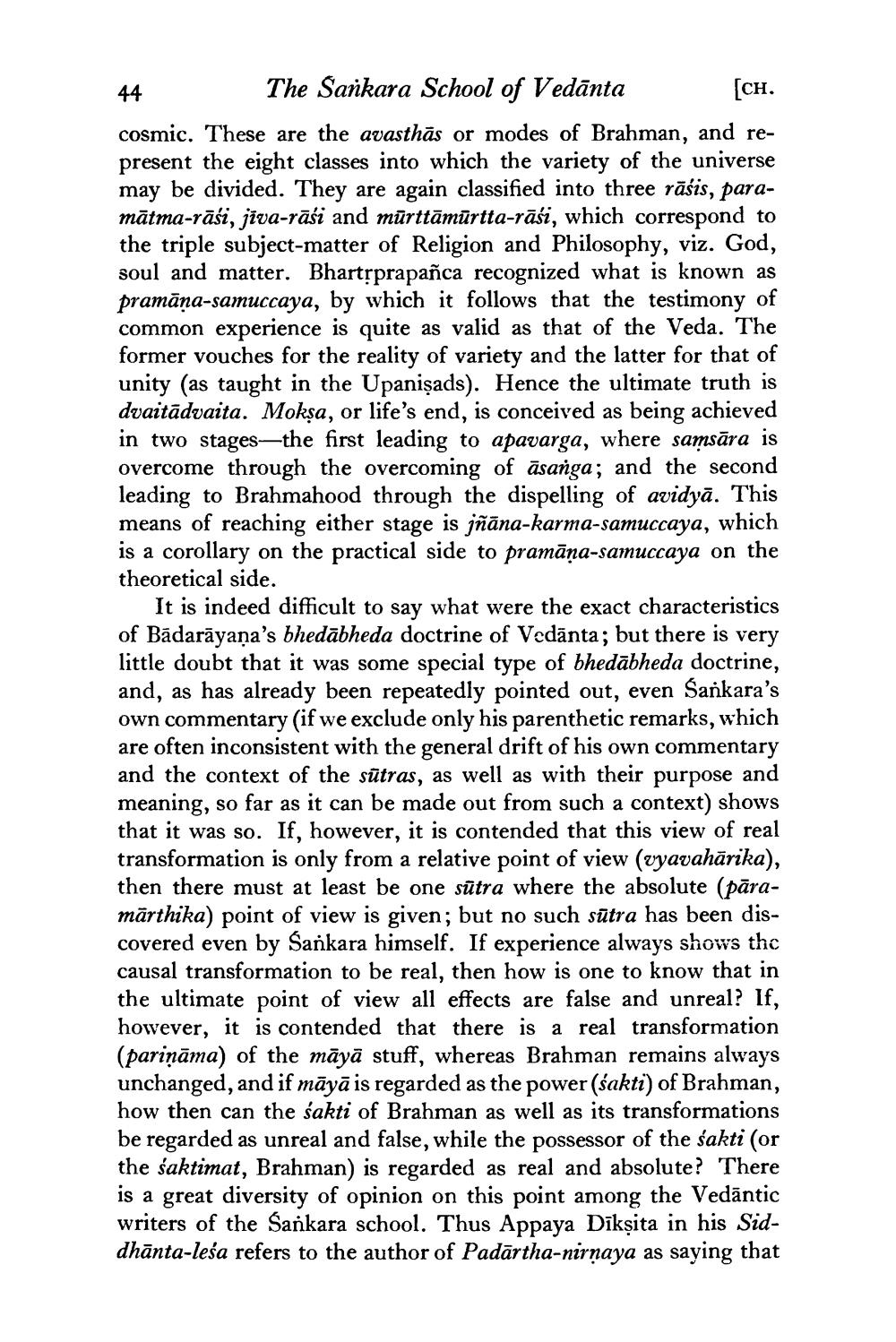________________
44
The Sankara School of Vedānta
[ch. cosmic. These are the avasthās or modes of Brahman, and represent the eight classes into which the variety of the universe may be divided. They are again classified into three rāśis, paramātma-rāśi, jiva-rāśi and mūrttāmūrtta-rāśi, which correspond to the triple subject-matter of Religion and Philosophy, viz. God, soul and matter. Bhartsprapanca recognized what is known as pramāņa-samuccaya, by which it follows that the testimony of common experience is quite as valid as that of the Veda. The former vouches for the reality of variety and the latter for that of unity (as taught in the Upanişads). Hence the ultimate truth is dvaitādvaita. Mokşa, or life's end, is conceived as being achieved in two stages—the first leading to apavarga, where samsāra is overcome through the overcoming of āsanga; and the second leading to Brahmahood through the dispelling of avidyā. This means of reaching either stage is jñāna-karma-samuccaya, which is a corollary on the practical side to pramāna-samuccaya on the theoretical side.
It is indeed difficult to say what were the exact characteristics of Bādarāyaṇa's bhedābheda doctrine of Vedānta; but there is very little doubt that it was some special type of bhedābheda doctrine, and, as has already been repeatedly pointed out, even Sankara's own commentary (if we exclude only his parenthetic remarks, which are often inconsistent with the general drift of his own commentary and the context of the sūtras, as well as with their purpose and meaning, so far as it can be made out from such a context) shows that it was so. If, however, it is contended that this view of real transformation is only from a relative point of view (vyavahārika), then there must at least be one sūtra where the absolute (pāramārthika) point of view is given; but no such sūtra has been discovered even by Sankara himself. If experience always shows the causal transformation to be real, then how is one to know that in the ultimate point of view all effects are false and unreal? If, however, it is contended that there is a real transformation (pariņāma) of the māyā stuff, whereas Brahman remains always unchanged, and if māyā is regarded as the power (sakti) of Brahman, how then can the sakti of Brahman as well as its transformations be regarded as unreal and false, while the possessor of the sakti (or the saktimat, Brahman) is regarded as real and absolute? There is a great diversity of opinion on this point among the Vedāntic writers of the Sankara school. Thus Appaya Dikșita in his Siddhānta-leśa refers to the author of Padārtha-nirnaya as saying that




